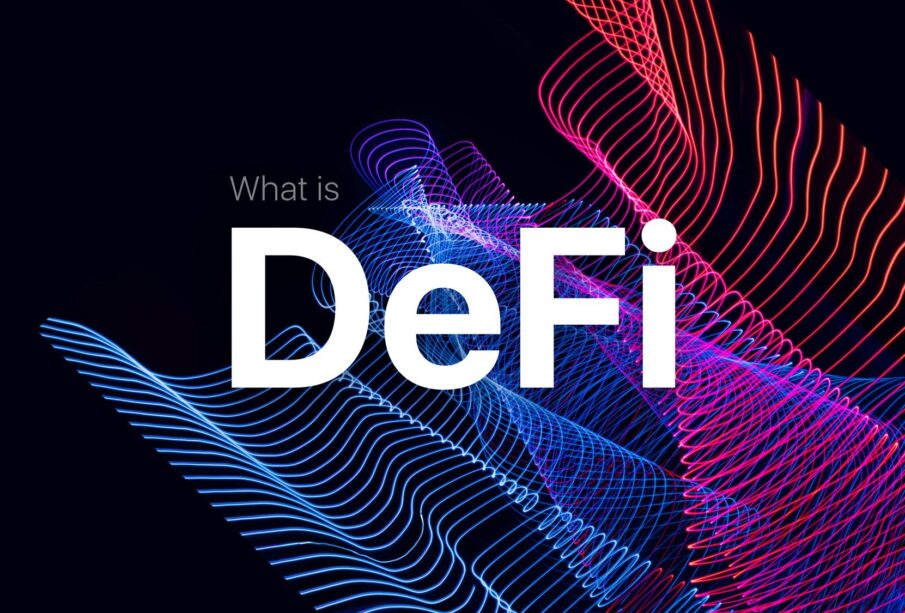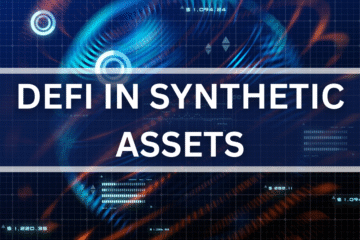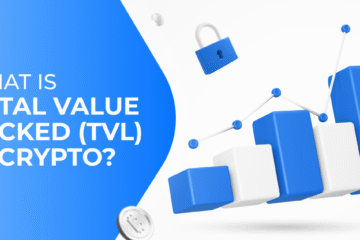Beginner’s Guide: What Is DeFi?

Decentralized Finance, or DeFi, is surrounded by hype, debate, skepticism, confusion, and excitement. DeFi is a blockchain-based ecosystem of products and services that replaces traditional financial intermediaries with freely accessible, autonomous, and transparent software applications.
Though still in its infancy (just a few years old), DeFi’s economic impact is massive: Ethereum, its primary infrastructure, settled ~$1.5 trillion in transactions last quarter, rivaling 50% of Visa’s volume. Decentralized money markets like Compound and Aave issue billions in loans monthly, and platforms like Uniswap handle trading volumes nearing 30% of Coinbase’s. (Disclosure: The author works at Uniswap Labs, which helped develop the Uniswap protocol.)
With entrepreneurs, business leaders, policymakers, and institutions keenly interested, this guide explains DeFi’s features and benefits, outlines future challenges, and explores its path to mainstream adoption.
But first, what makes DeFi possible?
01. What Is DeFi? Where Did It Come From?
DeFi builds on three major waves of blockchain innovation over the past decade, each starting with skepticism and evolving into acceptance and adoption.
- First Wave: Bitcoin (2009)
Bitcoin introduced the distributed ledger (blockchain), enabling peer-to-peer transfers of a non-sovereign digital asset. - Second Wave: Ethereum
Built on the same decentralized, censorship-resistant architecture as Bitcoin, Ethereum’s native programming language (Solidity) allows developers to create any imaginable application, transforming Ethereum into a globally accessible supercomputer. - Third Wave: Initial Coin Offerings (ICOs, 2017)
The ICO boom funded numerous projects, some of which began fulfilling the promise of a decentralized financial ecosystem.
DeFi is the fourth wave, combining these innovations.
Through DeFi, anyone worldwide can use an easily downloadable wallet to borrow, lend, send, or trade blockchain-based assets without banks or brokers. Users can also engage in advanced financial activities like leverage trading, structured products, synthetic assets, insurance underwriting, or market-making, all while retaining full control of their assets.
DeFi protocols adhere to key standards—permissionlessness and transparency—reflecting Ethereum’s values, as Ethereum powers most decentralized applications (dApps).
- Permissionless: DeFi serves anyone with an internet connection, regardless of race, gender, age, wealth, or politics. Developers can build on these platforms without fear of a central authority revoking access.
- Transparent: DeFi’s open-source or auditable code allows anyone to inspect it. All transactions are recorded on the blockchain, enabling easy auditing or data analysis for investment or investigation.
02. What Are DeFi’s Features and Benefits?
DeFi’s core traits—permissionlessness and transparency—translate into powerful use cases.
1. Lower Barriers, Reduced Switching Costs, and Greater Choice
Ethereum-based apps’ permissionless nature allows developers to freely fork (copy and adapt) codebases, lowering entry barriers to zero. End users benefit most: since all apps share Ethereum’s blockchain database, moving funds between platforms is seamless. This forces projects to compete fiercely on fees and user experience.
For example, “exchange aggregator” apps use public APIs to split orders across multiple liquidity venues, securing the best rates for users. In months, these aggregators have driven DeFi toward optimal price execution—a standard that took regulated electronic trading venues years to achieve.
Compare this to traditional banking, where opening or closing an account takes days, or brokerage, where transferring securities between platforms can take six business days and multiple calls. These “switching costs” deter consumers from moving to better services. Traditional finance is trending oppositely: U.S. bank licenses have declined 3.6% annually since 1990, limiting consumer choice.
2. Transparent Accounting, Robust Risk Assessment
DeFi’s auditable capital reserves enable rigorous risk assessment. In decentralized money markets or lending platforms, users can check collateral quality and system leverage at any time.
This contrasts with traditional finance’s opacity. The 2007-2008 financial crisis revealed U.S. banks’ loan-to-deposit ratio hit 3.5—twice that of Russia, the second-most leveraged system—only after the fact.
3. Aligned Incentives, Solving Principal-Agent Problems
Trustless, programmable escrow accounts (smart contracts) ensure DeFi protocols are enforced at the code level.
For example, in MakerDAO, a decentralized lending platform, MKR token holders earn interest from borrowers. In cases of insolvency or default, they bear the loss: MKR is automatically minted and sold to cover bad debts. This enforces strict accountability, compelling MKR holders to set prudent collateral and liquidation parameters to avoid dilution.
In traditional finance, shareholders suffer when management errs. The 2021 Archegos collapse cost Credit Suisse ~$4.7 billion, hitting investors hard. While some executives left, they faced no personal liability. In DeFi, direct accountability drives better risk management.
4. Modern Infrastructure, Enhanced Market Efficiency, and Robustness
Ideally, capital in the internet age should flow as seamlessly as information, with instant settlements, minimal costs, and 24/7/365 availability. Yet, global finance operates 9-to-5, excluding weekends and holidays—highly inefficient.
Demand for modern infrastructure is clear: Ethereum settled $1.5 trillion last quarter, up from $31 billion in Q1 2019. Inefficient settlement causes market chaos, like when Robinhood halted GameStop (GME) purchases in 2021 due to T+2 settlement delays (a standard where trades take two days to clear).
Robust infrastructure is also key. Ethereum and its apps have maintained 100% uptime over six years, unlike centralized exchanges or payment networks, which can falter during volatility. Robinhood’s 2020 GME trading halt led to user losses and lawsuits.
5. Global Access, Unified Markets
Global markets offer larger liquidity pools, reducing transaction costs for all participants. Decentralized exchanges (DEXs) often provide better rates for certain assets than siloed centralized exchanges. In stock markets, tools like American Depositary Receipts (ADRs) bridge forex markets but face high premiums and low liquidity.
DeFi’s global access also promotes financial inclusion. Developing regions are often excluded from financial services due to high setup costs or weak infrastructure. DeFi can serve marginalized populations with insurance, international payments, USD-denominated savings, and credit.
6. Real-Time Data
Building financial services on a transparent, shared blockchain database makes transaction data publicly available in real time. For instance, Uniswap’s liquidity providers can track profits per second. Investors use this for better price discovery and resource allocation, while regulators can monitor for illicit activity.
Traditional capital markets, by contrast, leave investors in the dark until quarterly reports. Private markets are worse, with firms often manipulating metrics—if they share them. Investors struggle with outdated data, and regulators may take years to uncover misconduct, as seen in the Greensill Capital collapse or Wirecard’s accounting fraud.
7. Eliminating Counterparty/Credit Risk, Lowering Compliance Costs
By definition, DeFi platforms are self-custodial: users never surrender assets to a centralized operator. While daunting for some, this eliminates counterparty and credit risks, like defaults or failures to honor trades or loans. Since 2011, centralized exchanges have lost over $7 billion to hacks or operator fraud. DeFi shifts from “don’t be evil” to “can’t be evil.”
Self-custody also benefits DeFi operators by reducing liability and compliance costs. For example, U.S. FinCEN rules require firms holding user funds to obtain money transmitter licenses—a complex process. DeFi apps interacting with self-custodial wallets can operate without such licenses.
03. Challenges to Mainstream Adoption
Like any emerging technology, DeFi faces hurdles, much like the early internet with its slow connections and costly hardware, limiting










